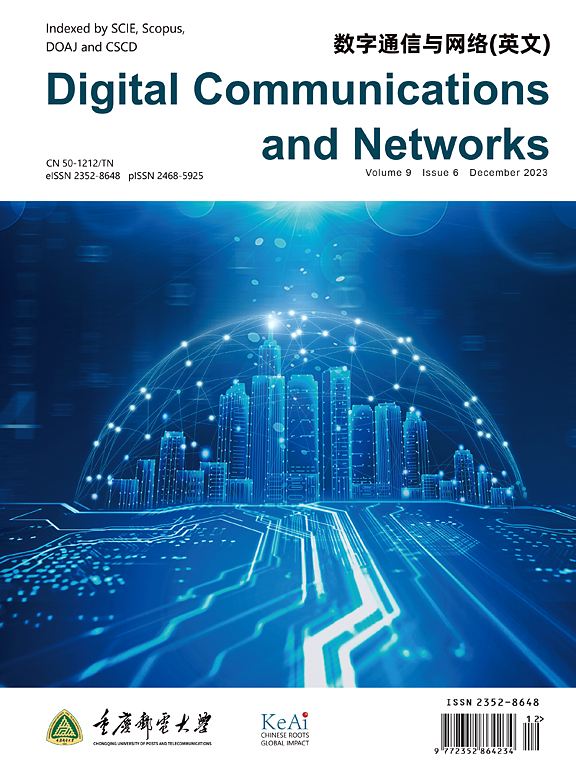基于动态综合学习的中国卫星频率和轨道实体关系提取方法
IF 7.5
2区 计算机科学
Q1 TELECOMMUNICATIONS
引用次数: 0
摘要
鉴于卫星频率与轨道资源的稀缺性,建立卫星频率与轨道领域的综合知识图谱(SFO- kg)并利用知识推理技术自动挖掘可用的卫星频率与轨道资源至关重要。构建SFO-KG的一个重要方面是中国实体关系的提取。不幸的是,目前没有公开可用的中文SFO实体关系提取(RE)数据集。此外,公开的SFO文本数据包含大量与其他关系句相似的NA(表示“No Answer”)关系类别句子,这给准确分类带来了挑战,导致实体RE中NA关系类别的召回率和准确率较低。因此,这一问题对构建知识图的准确性和RE过程的效率都产生了不利影响。针对这些问题,本文提出了一种基于动态集成学习的中文SFO文本实体关系提取方法。该方法包括构建人工标注的中文SFO实体RE数据集和结合SFO资源数据特征的分类器。该方法结合了集成学习和预训练模型,特别是利用了来自变压器的双向编码器表示(BERT)。此外,它还结合了一类分类、注意机制和动态反馈机制,以提高RE模型的性能。实验结果表明,无论从平衡数据集还是长尾数据集中提取实体关系,该方法在F1值方面都优于传统方法。本文章由计算机程序翻译,如有差异,请以英文原文为准。
Chinese satellite frequency and orbit entity relation extraction method based on dynamic integrated learning
Given the scarcity of Satellite Frequency and Orbit (SFO) resources, it holds paramount importance to establish a comprehensive knowledge graph of SFO field (SFO-KG) and employ knowledge reasoning technology to automatically mine available SFO resources. An essential aspect of constructing SFO-KG is the extraction of Chinese entity relations. Unfortunately, there is currently no publicly available Chinese SFO entity Relation Extraction (RE) dataset. Moreover, publicly available SFO text data contain numerous NA (representing for “No Answer”) relation category sentences that resemble other relation sentences and pose challenges in accurate classification, resulting in low recall and precision for the NA relation category in entity RE. Consequently, this issue adversely affects both the accuracy of constructing the knowledge graph and the efficiency of RE processes. To address these challenges, this paper proposes a method for extracting Chinese SFO text entity relations based on dynamic integrated learning. This method includes the construction of a manually annotated Chinese SFO entity RE dataset and a classifier combining features of SFO resource data. The proposed approach combines integrated learning and pre-training models, specifically utilizing Bidirectional Encoder Representation from Transformers (BERT). In addition, it incorporates one-class classification, attention mechanisms, and dynamic feedback mechanisms to improve the performance of the RE model. Experimental results show that the proposed method outperforms the traditional methods in terms of F1 value when extracting entity relations from both balanced and long-tailed datasets.
求助全文
通过发布文献求助,成功后即可免费获取论文全文。
去求助
来源期刊

Digital Communications and Networks
Computer Science-Hardware and Architecture
CiteScore
12.80
自引率
5.10%
发文量
915
审稿时长
30 weeks
期刊介绍:
Digital Communications and Networks is a prestigious journal that emphasizes on communication systems and networks. We publish only top-notch original articles and authoritative reviews, which undergo rigorous peer-review. We are proud to announce that all our articles are fully Open Access and can be accessed on ScienceDirect. Our journal is recognized and indexed by eminent databases such as the Science Citation Index Expanded (SCIE) and Scopus.
In addition to regular articles, we may also consider exceptional conference papers that have been significantly expanded. Furthermore, we periodically release special issues that focus on specific aspects of the field.
In conclusion, Digital Communications and Networks is a leading journal that guarantees exceptional quality and accessibility for researchers and scholars in the field of communication systems and networks.
 求助内容:
求助内容: 应助结果提醒方式:
应助结果提醒方式:


